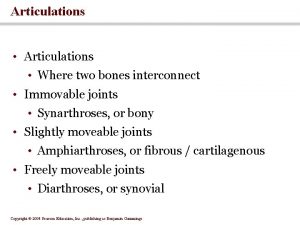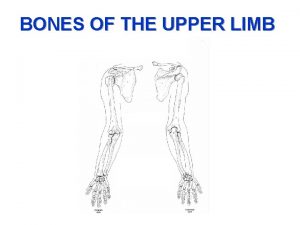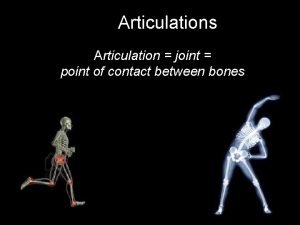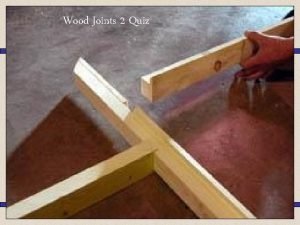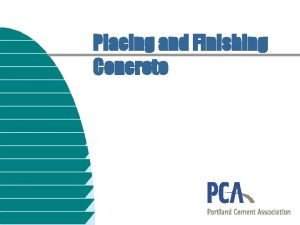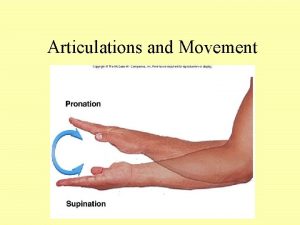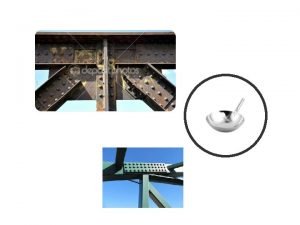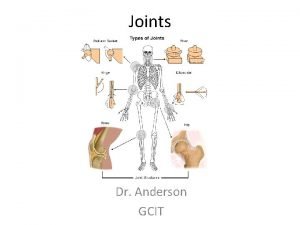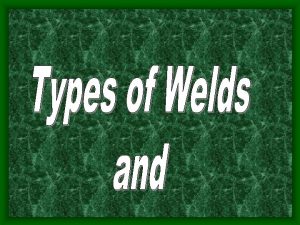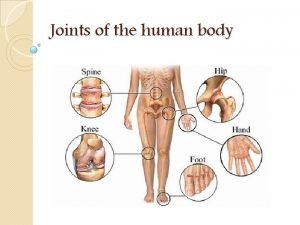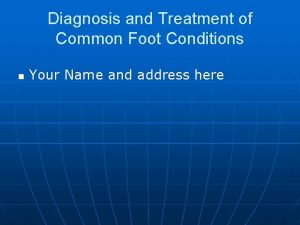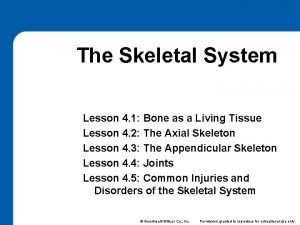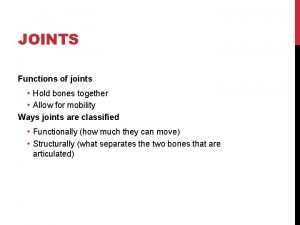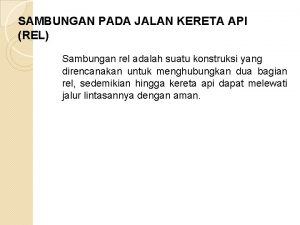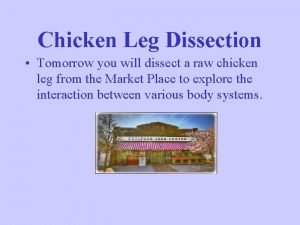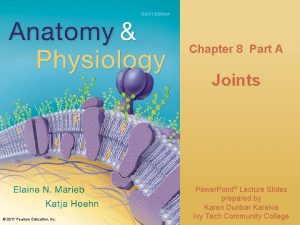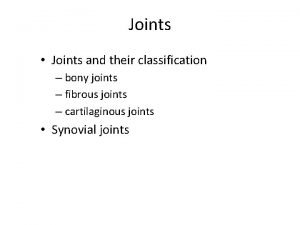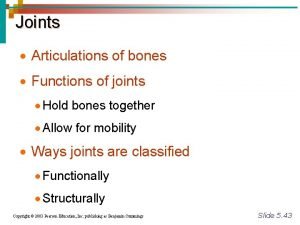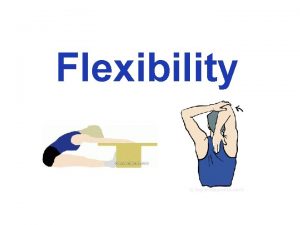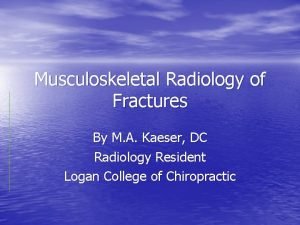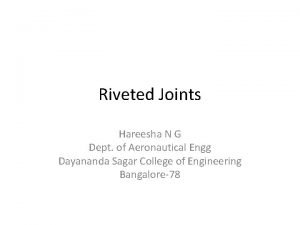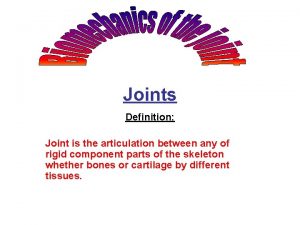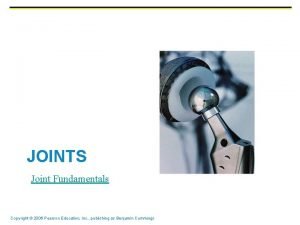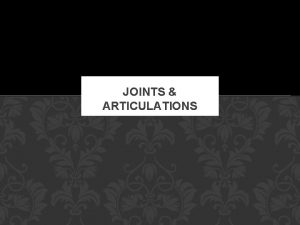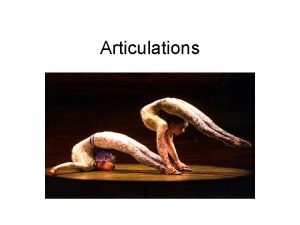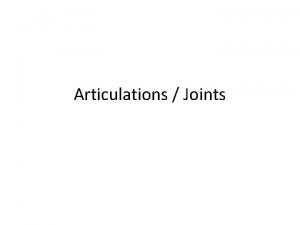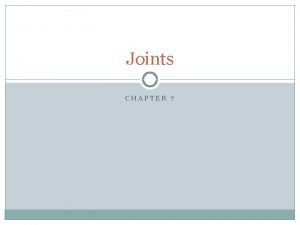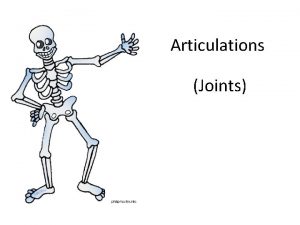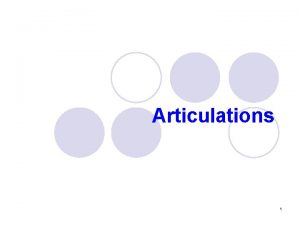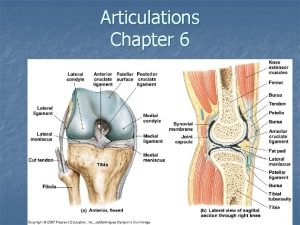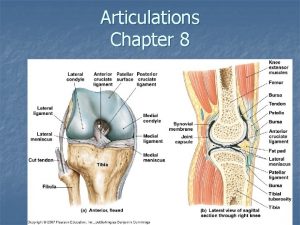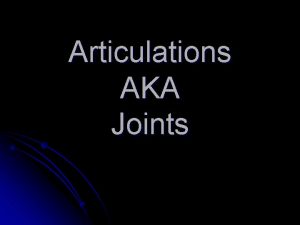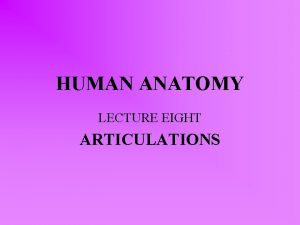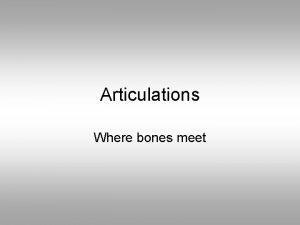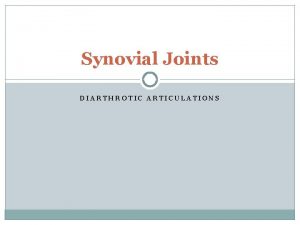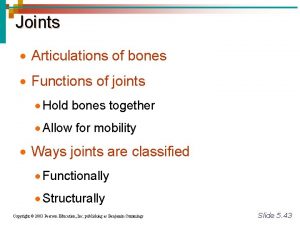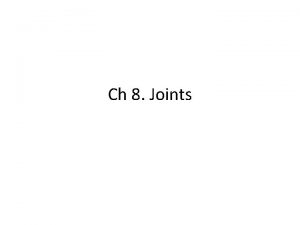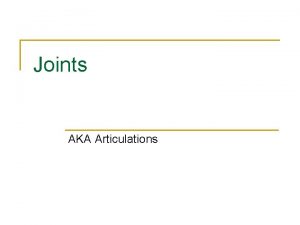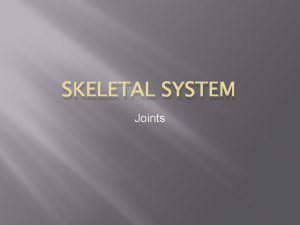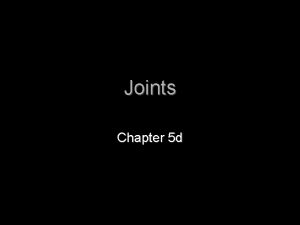Joints Articulations Joints Articulations are where 2 or

































- Slides: 33

Joints = Articulations

Joints • Articulations are where 2 or more bones meet.

Classification of Joints

Classified according to movement or function: 1. synarthroses immovable • ex: cranial bones, sutures

2. amphiarthroses - slightly movable ex: ribs with vertebrae

3. diarthroses – freely movable ex: elbow, knee

sutures only between bones of the skull • a type of fibrous joint joined by fibrous tissue

Synovial Joints

Synovial Joints • articulating bones are separated by a fluid-filled cavity • all are freely movable

Synovial Joints Structure: articular cartilage smooth, hyaline joint cavity – fluid-filled space articular capsule double fibrous membrane synovial fluid prevents cartilage erosion, lubricates reinforcing ligaments

• Bursa - between bone and ligaments, muscle, skin, or tendons - flattened fibrous sacs - prevents rubbing against bone

• tendons – connect muscle to bone, fibrous tissue

• ligaments – connect bone to bone, fibrous tissue

Types of Synovial Joints

• hinge - single plane motion ex: knee, elbow, fingers

• pivot – rotation ex: atlas and axis, radioulna

• saddle - move in 4 directions ex: carpalmetacarpal of thumb only

• ball and socket movement in all axis ex: shoulder, hip

• Plane or gliding joints movement limited, either up and down or left and right ex: sternum and clavicle, between vertebrae, carpals, tarsals

• condyloid – angular motion ex: knuckles

Types of Synovial Joints 1. hinge - single plane motion, ex: knee, elbow, fingers 2. pivot - rotation, ex: atlas and axis, radioulna 3. saddle - move in 4 directions, ex: carpalmetacarpal of thumb only 4. ball and socket - movement in all axis, ex: shoulder, hip 5. plane/ gliding joints - movement limited, either up/down or left/right, ex: sternum/ clavicle, between vertebrae, carpals, tarsals 6. condyloid - angular motion, ex: knuckles

Types of Angular Movements

• flexion - decreases angle, brings bones together dorsiflexion - foot up (toes up)

extension - increases angle hyperextension - beyond upright position (head), exception knee towards back of body

• abduction - away from midline • adduction - toward midline

• circumduction - distal end moves in circle, throwing a baseball

• rotation - around own axis, turning head

Types of Angular Movements 1. flexion - decreases angle, brings bones together 2. dorsiflexion - foot up (toes up) 3. extension - increases angle 4. hyperextension - beyond upright position (head), exception knee towards back of body 5. abduction - away from midline 6. adduction - toward midline 7. circumduction - distal end moves in circle, throwing a baseball 8. rotation - around own axis, turning head

Joint Injuries

Sprains • ligaments stretched or torn • heals slowly because of poor vascularity • if completely torn, must be repaired surgically

Dislocations • when bones are forced out of normal position of joint cavity • bone ends must be reduced (realigned) like a fracture

Cartilage Injuries • most are tearing of knee menisci from fall or severe twisting • cartilage is avascular and will not be able to repair itself

• arthroscopy allows surgeon to view interior of joint through small incision – damaged cartilage is removed, ligament repaired – does not severely impair movement but joint less stable
 Antigentest åre
Antigentest åre Synarthroses
Synarthroses Maxilla bone
Maxilla bone Articulations
Articulations Articulations
Articulations Through housing joint
Through housing joint Darbying
Darbying Modified ball and socket joint
Modified ball and socket joint Sambungan permanen
Sambungan permanen Function of joints
Function of joints Different types of welding joints
Different types of welding joints Glidding joint
Glidding joint Charcot joints
Charcot joints Tectonic joints
Tectonic joints Lesson 4.4 identifying movable joints
Lesson 4.4 identifying movable joints Hold joints together
Hold joints together Sambungan pada rel pada
Sambungan pada rel pada Chicken leg anatomy
Chicken leg anatomy Dr pavor
Dr pavor Types of synovial joints
Types of synovial joints Fibrous joint
Fibrous joint Five basic welding joints
Five basic welding joints Using the method of joints determine the force
Using the method of joints determine the force Tempus robotics
Tempus robotics Function of joints
Function of joints Steel roof trusses details
Steel roof trusses details Flexibility is the ability to move a joint
Flexibility is the ability to move a joint Types of construction joints
Types of construction joints Types of weathering
Types of weathering Joints are also called
Joints are also called Charcot joint
Charcot joint Double riveted lap joint zig-zag type
Double riveted lap joint zig-zag type Codyloid joint
Codyloid joint Pearson
Pearson

